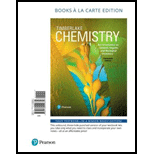
Concept explainers
To determine:
- The class of enzyme that catalyzes the reaction.
- Preventing toxic level of oxalic acid in the body by the ingestion of solution of ethanol in the body.
Answer to Problem 16.55UTC
Solution:
- Class of enzyme that catalyzes the reaction: Oxidoreductase.
- The treatment for the ingestion of ethylene glycol is an intravenous solution of ethanol as it has much higher affinity for the alcohol dehydrogenase, the first enzyme in the degradation pathway there by blocking the formation of subsequent products.
The cytochrome P-450 enzyme and alcohol dehydrogenase usually denoted by ADH are the class of enzymes which catalyze the reaction.
Given:
Ethylene glycol (
Treatment of ethylene glycol is an intravenous solution of ethanol.
Explanation of Solution
- Ethylene glycol on oxidation gives oxoethanoic acid and oxalic acid. So, this reaction is catalyzed by oxidase enzyme which belongs to the class of oxidoreductase.
- Ethanol of pharmaceutical grade is given intravenously to prevent the formation of oxalic acid. This is because the toxicity of ethylene glycol comes from the formation of oxalic acid and glycolic acid. The formation of these can be prevented by addition of alcohol as alcohol is found to have much higher affinity to alcohol dehydrogenase compared to ethyl glycol which helps in preventing the degradation of ethylene glycol. If the oxalic acid formation is prevented the body excretes the ethylene glycol out.
The alcohol dehydrogenase enzyme also denoted by ADH is the enzyme that convert/ catalyze the reaction ethylene glycol to glycolaldehyde there by making it toxic.
- Class of enzyme that catalyzes the reaction: Oxidoreductase.
- The treatment for the ingestion of ethylene glycol is an intravenous solution of ethanol as it has much higher affinity for the alcohol dehydrogenase, the first enzyme in the degradation pathway there by blocking the formation of subsequent products.
The cytochrome P-450 enzyme and alcohol dehydrogenase usually denoted by ADH are the class of enzymes which catalyze the reaction.
Want to see more full solutions like this?
Chapter 16 Solutions
Chemistry: An Introduction to General, Organic, and Biological Chemistry, Books a la Carte Edition (13th Edition)
- Write all of Me Possible Products For each Of the Following reactions. In each case identity all pains of enantiomers, all digsterzoners and all Meso compounds 9. 11-60 11-0-11 V-G Η Η H ~ C-11 +HB+ - 1 H b. पन्ना 171-0-11 H-C-H Н C-C=c-call +HBr Perendez ==arrow_forwardHow can i draw the mechanisms for this molecule?arrow_forwarda. Discuss and explain he difference IN Stability between the Chai and Boat Гольцу от судомехане b. For the Following Molecule draw both possible Clain conformations and explain which one is more stable and for what Reason. H. CH₂ CH₂ H "Harrow_forward
- Please provide the mechanism for this reacitonarrow_forwardQuestion 5: Name the following compound in two ways using side chain and using prefix amine (Common name and IUPAC name both) CH3NH2 CH3CH2NHCH3 CH₂CH₂N(CH3)2 Draw the structure of diethyl methyl amine Question 6. Write the balanced combustion reaction for: a. Hexane b. Propyne c. 2-pentene Question 7: Write the following electrophilic substitution reactions of benzene: Hint: Use notes if you get confused a. Halogenation reaction: b. Nitration reaction : c. Sulphonation reaction: d. Alkylation reaction: e. Aceylation reaction:arrow_forwardQuestion 4. Name the following structures ○ CH3-C-N-H H CH3CH2-C-N-H H CH3CH2-C-N-CH3 Harrow_forward
 ChemistryChemistryISBN:9781305957404Author:Steven S. Zumdahl, Susan A. Zumdahl, Donald J. DeCostePublisher:Cengage Learning
ChemistryChemistryISBN:9781305957404Author:Steven S. Zumdahl, Susan A. Zumdahl, Donald J. DeCostePublisher:Cengage Learning ChemistryChemistryISBN:9781259911156Author:Raymond Chang Dr., Jason Overby ProfessorPublisher:McGraw-Hill Education
ChemistryChemistryISBN:9781259911156Author:Raymond Chang Dr., Jason Overby ProfessorPublisher:McGraw-Hill Education Principles of Instrumental AnalysisChemistryISBN:9781305577213Author:Douglas A. Skoog, F. James Holler, Stanley R. CrouchPublisher:Cengage Learning
Principles of Instrumental AnalysisChemistryISBN:9781305577213Author:Douglas A. Skoog, F. James Holler, Stanley R. CrouchPublisher:Cengage Learning Organic ChemistryChemistryISBN:9780078021558Author:Janice Gorzynski Smith Dr.Publisher:McGraw-Hill Education
Organic ChemistryChemistryISBN:9780078021558Author:Janice Gorzynski Smith Dr.Publisher:McGraw-Hill Education Chemistry: Principles and ReactionsChemistryISBN:9781305079373Author:William L. Masterton, Cecile N. HurleyPublisher:Cengage Learning
Chemistry: Principles and ReactionsChemistryISBN:9781305079373Author:William L. Masterton, Cecile N. HurleyPublisher:Cengage Learning Elementary Principles of Chemical Processes, Bind...ChemistryISBN:9781118431221Author:Richard M. Felder, Ronald W. Rousseau, Lisa G. BullardPublisher:WILEY
Elementary Principles of Chemical Processes, Bind...ChemistryISBN:9781118431221Author:Richard M. Felder, Ronald W. Rousseau, Lisa G. BullardPublisher:WILEY





